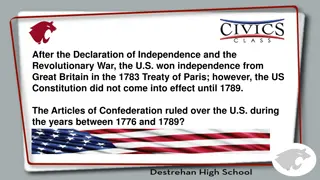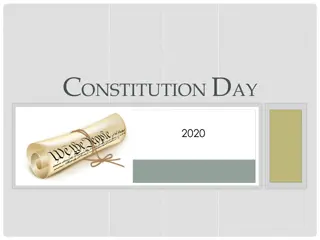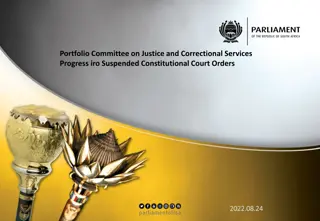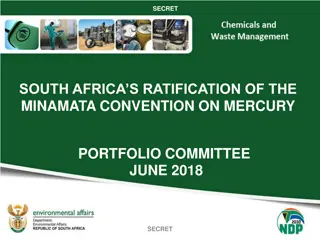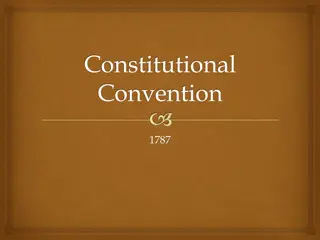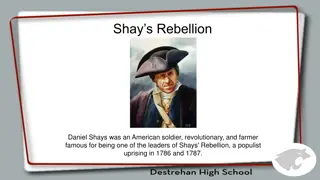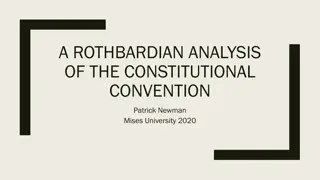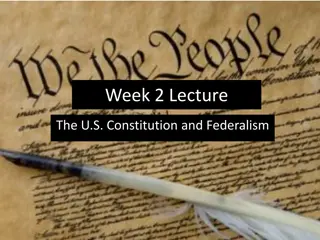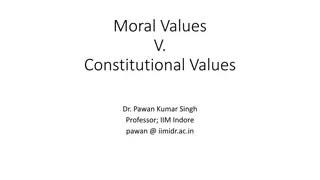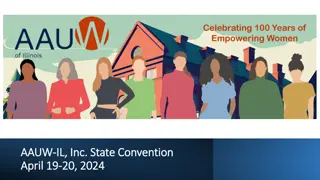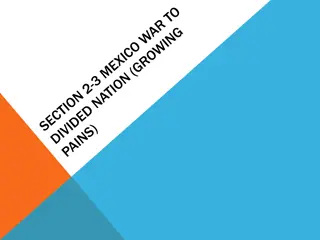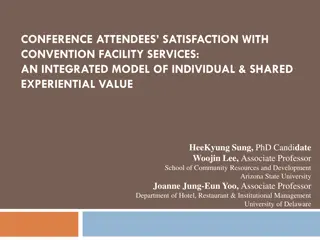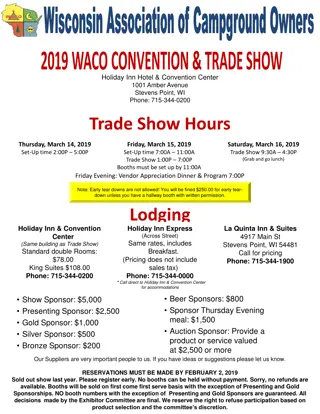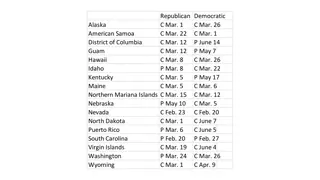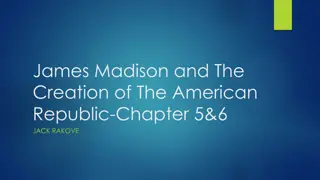The Constitutional Convention of 1787: Key Plans and Compromises
The Constitutional Convention of 1787 aimed to address issues with the Articles of Confederation by considering the Virginia and New Jersey Plans. The Great Compromise led to the formation of a bicameral Congress with proportional representation in the House of Representatives and equal representation in the Senate, ensuring a stronger central government.
Uploaded on Sep 27, 2024 | 0 Views
Download Presentation

Please find below an Image/Link to download the presentation.
The content on the website is provided AS IS for your information and personal use only. It may not be sold, licensed, or shared on other websites without obtaining consent from the author. Download presentation by click this link. If you encounter any issues during the download, it is possible that the publisher has removed the file from their server.
E N D
Presentation Transcript
THE CONSTITUTIONAL CONVENTION OF 1787 Chapter 5 Section 2 (Part 1)
Background The Articles of Confederation needed to be replaced for the U.S. to survive. What were some issues with the Articles of Confederation?
The Constitutional Convention States sent delegates to Philadelphia in 1787 to work on a constitution. Two main plans were considered for the national government. The New Jersey Plan by William Paterson The Virginia Plan by James Madison
Virginia Plan Representation based on population Congress would have two houses. Delegates in the lower house chosen by popular vote. Favored by Big States (with large populations) (New York, Virginia, Massachusetts) Proposed a strong national government with 3 separate branches. (Which had power over the states)
New Jersey Plan There would be one congress with a delegate from each state. Equal representation for states, the population doesn t matter. Favored by the states with small populations. (New Jersey, Rhode Island, Delaware)
Compromises The delegates learn from the mistakes of the Articles of Confederation. They agree on a strong central government. The big states and little states need to compromise on the issue of representation. The Great Compromise is a plan which satisfies all of the states.
The Great Compromise Congress will have two houses. One House: (The House of Representatives) will be based on population. States with big populations have more representatives. In 2014 there are 435 total seats in the house. California 2014 population: 38 million Seats in the House: 53 New Jersey 2014 population: 9 million Seats in the House: 12
The Senate The other house (the Senate) has equal representation for each state. There are two representatives for each states, the population does not matter. Rhode Island and Texas have the same amount of representatives. This pleases the small states at the convention.
Slavery at the Convention Slavery was a distracting question at the convention. Most delegates saw slavery naturally dying out. In 1808 slaves would stop being imported in the U.S. Slavery was not a major moral issue at this convection. The big issue was if slaves should be counted in terms of representation.
The 3/5s Compromise The delegates agreed finally that each slaves would count as 3/5s a person when deciding representation. This satisfied both Northern and Southern States. Slavery continues in the United States after the convention.
The Electoral College Do you think the electoral collage system is fair? If not how to you think the election process should be handled?
Checks and Balances At the convention a three branch government was created. The branches were each given a check (an advantage over each other) to prevent one branch from dominating The checks and balances system gives each branch certain powers over other branches.
Example In our government the President has a lot of power but the Senate has to approve the President s decisions. The Senate can veto (overrule) some of the Presidents decisions. This is an example of a check on the power of the President (Executive Branch).
3 Branches of Government The Executive Branch Job is to carry out the law Checks on the Judicial Branch Has control over federal judges Can pardon individuals Checks on the Legislative branch Can veto bills from Congress Can propose Laws Influence public opinion The President Powers 1. Appoints Judges 2. Signs Laws 3. Negotiates Treaties 4. Gives out Pardons 5. Commander of the Armed Forces
Legislative Branch Job is to make the laws Checks on the Judicial Branch Congress can impeach federal judges. Can reject appointment of judges Checks on the Executive Branch Can override a veto Approve Funding Impeach the President Congress: The House of Representatives and the Senate Powers 1. Create Laws 2. Gives out funds 3. Approves Treaties 4. Approves Funding 5.Declares War 6. Regulate Trade
The Judicial Branch Job is to interpret the law (decide is the law fair or not) Checks on the Executive Branch Appointed for life, no Presidential control Can declare presidential actions unconstitutional Checks on the Legislative Branch Can decide the meaning of laws Can declare acts of Congress unconstitutional The Supreme Court and other federal courts Powers 1. Overturn rulings by lower judges 2. Decide if laws are just 3. Reviews the other branches








